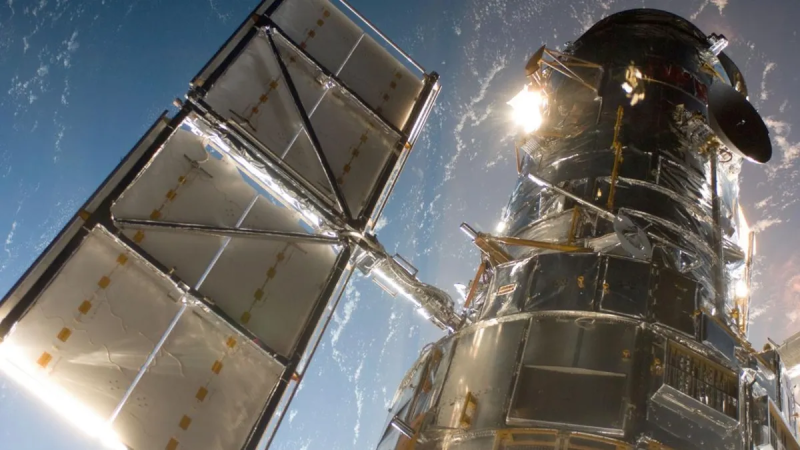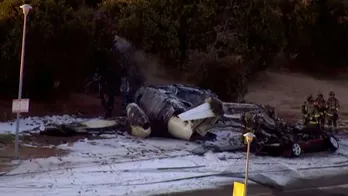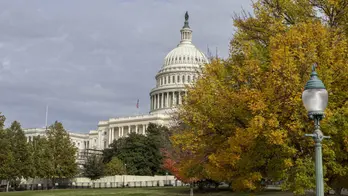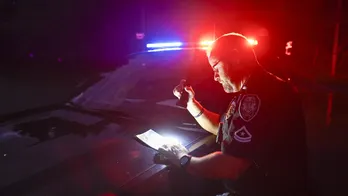‘Dramatic cosmic encounter’ captured by Hubble may be forecasting the fate of the Milky Way
The Hubble Space Telescope captured an image of a "monster merger" of two galaxies, NASA and the European Space Agency announced.
The image shows a "peculiar" galaxy, Arp 122, that's actually comprised of two galaxies colliding in a "dramatic cosmic encounter" about 570 million light-years from Earth, NASA and ESA announced Friday.

The Hubble Space Telescope captured an image of Arp 122, a peculiar galaxy comprised of two galaxies — NGC 6040 and LEDA 59642 — in the midst of a collision. The encounter is located roughly 570 million light years from Earth. (ESA/Hubble & NASA, J. Dalcanton, Dark Energy Survey/DOE/FNAL/DECam/CTIO/NOIRLab/NSF/AURA; CC BY 4.0 Acknowledgement: L. Shatz)
"Galaxies are composed of stars and their solar systems, dust, gas, and invisible dark matter," the announcement read. "In galactic collisions, therefore, these constituent components may experience enormous changes in the gravitational forces acting on them."
"In time, this completely changes the structure of the two (or more) colliding galaxies, and sometimes ultimately results in a single, merged galaxy," the announcement continued. "That may well be what results from the collision pictured in this image."
HOW NASA JUST MADE HISTORY USING A CAT VIDEO

The Andromeda Galaxy is expected to collide with the Milky Way in about four billion years, according to the NASA/ESA announcement. (NASA/JPL/California Institute of Technology)
Hubble's high-definition image showed NGC 6040 — an oval-shaped, warped galaxy — colliding with the round, spiral galaxy of LEDA 59642, according to the joint announcement. The elliptical galaxy NGC 6041 — a central member of the galaxy cluster where Arp 122 resides — was also partially featured, shining brightly in the left corner of the image, though it wasn't part of the merger.
"It would be fascinating to know what Arp 122 will look like once this collision is complete… but that will not happen for a long, long time," the NASA/ESA announcement said.
Galactic mergers are incredibly slow events, according to NASA and ESA. The Milky Way, for example, is on track to collide with the Andromeda Galaxy, but the confrontation won't occur for around four billion years.
WHAT IS THE MYSTERY LIGHT NASA'S TELESCOPE JUST PICKED UP AROUND THIS FAILED STAR?

The Hubble Space Telescope is a project of international cooperation between NASA and the European Space Agency. The telescope was launched into space in 1990 to capture glimpses into the vast universe. (NASA Goddard)
"Galactic collisions and mergers are monumentally energetic and dramatic events, but they take place on a very slow timescale," the announcement read. "The process of colliding and merging will not be a quick one either: it might take hundreds of millions of years to unfold."
CLICK HERE TO GET THE FOX NEWS APP
Galaxies that formed from mergers have taken on a regular or elliptical structure, as the impact disrupts more complex structures, according to the joint announcement.
Disclaimer: The copyright of this article belongs to the original author. Reposting this article is solely for the purpose of information dissemination and does not constitute any investment advice. If there is any infringement, please contact us immediately. We will make corrections or deletions as necessary. Thank you.







